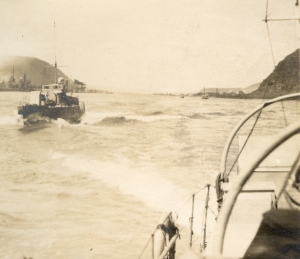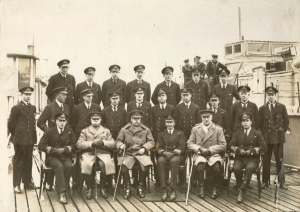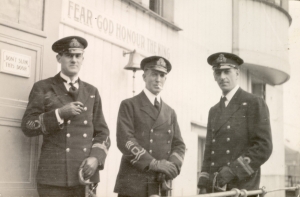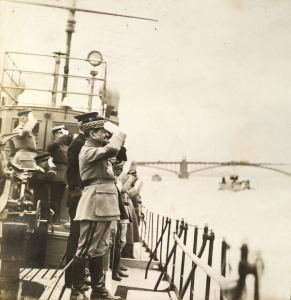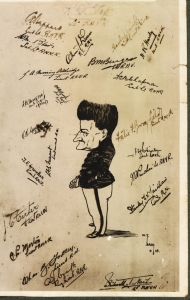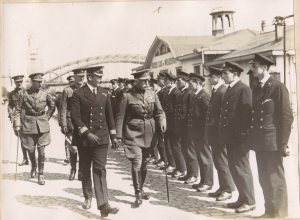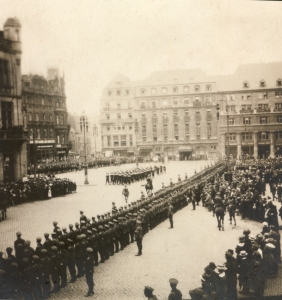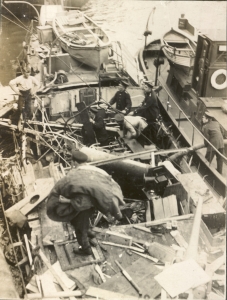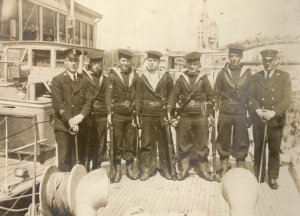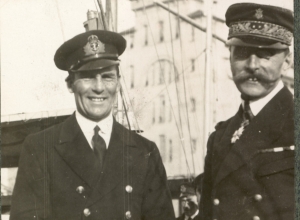The Rhine Patrol Flotilla
Part II: Life on the Rhine
Life for the Flotilla included regular patrols of the Rhine within the British sector, duty as naval escort for visiting dignitaries (Foch, Weygand, American General Allen, etc.) and formal visits to the headquarter cities of the other Allied powers during ceremonial events.
Part II: Life on the Rhine
Life for the Flotilla included regular patrols of the Rhine within the British sector, duty as naval escort for visiting dignitaries (Foch, Weygand, American General Allen, etc.) and formal visits to the headquarter cities of the other Allied powers during ceremonial events.
One such visit occurred in mid April 1919 when Commander Acheson received orders from the Admiralty to proceed to Mayence for a review of the British and French Rhine Flotillas by General Mangin. Orders for the review were quite specific, detailing how many guns to fire in salute, where the Flotilla was to be on the river, how crews should be arrayed on deck, how many revolutions their engines were to turn, etc.
It is interesting to note that Capitaine de Corvette F. Darlan acted as the French liaison officer for the Flotilla. This was Francois Darlan, serving with the French Rhine Patrol Flotilla. In 1925 he was appointed liaison officer to the French Navy Minister, eventually rising through the ranks to Admiral and culminating in his appointment as Navy Minister under Petain in 1940. In December, 1942 he was assassinated by a young French resistance fighter while visiting Algiers.
On 5 August 1919, Lieut. Stanley F Laidlaw, RN received orders from Commander Acheson to proceed back to Portsmouth with five ML's. It appears the Admiralty wished to dispense with the Flotilla altogether. However, General Sir William Robert Robertson, in command of the British Occupation forces at this time, determined that the Flotilla could not be entirely dispensed with.to do so would appear to give the French, with their Flotilla, a free hand on all of the Rhine.
At some point in late 1919 ML 229, under Lieut. John Robinson, DSO, RNVR, was lost in an explosion while fueling at a gas dock in Cologne. One member of the crew was killed and others, including Robinson, were wounded.
In late August 1920, four ML's were ordered to Mayence on the occasion of the Semaine Hippique (Horse Week) of Wiesbaden. Arrangements were facilitated once again by the newly promoted Le Capitaine de Fregate Darlan, now Commander of the French Rhine Flotilla. As is often the lot of the common sailor or soldier, it was only Commander Acheson who was billeted in a hotel for the duration of the stay. The rest of the crews slept aboard their ships.
During the winter of 1920/1921 Commander Acheson.s health began to fail. Though he would live until 1957 he determined that the time had come to retire from naval life. On 7 March 1921 Commander ARA Macdonald, RN, arrived to take over command of the Flotilla.
To date, little research has been done regarding the activities of the Flotilla and its men during its remaining years. It is known that, at the end of 1921, the Flotilla was reduced to five ML's. The suppression of the Flotilla was again periodically suggested by the Admiralty; with local Occupation command arguing that the prestige value of having it in Cologne was more important than the cost savings. The last five ML's remained on station until 27 January 1926 when Cologne was evacuated by the British Army of Occupation. It is not yet known if the ML's were, at this point, able to take the more direct route home through the Netherlands and along the coast of Belgium and France or if they crossed France by way of the rivers and canals one last time.
These ML's were some of the very last to be decommissioned and sold out of the Royal Navy. All 581 were eliminated by 1927, sold individually or in small lots for private yacht conversion or for use by other countries.thus bringing the story of the ML's of the Royal Navy to a close.
These ML's were some of the very last to be decommissioned and sold out of the Royal Navy. All 581 were eliminated by 1927, sold individually or in small lots for private yacht conversion or for use by other countries.thus bringing the story of the ML's of the Royal Navy to a close.
